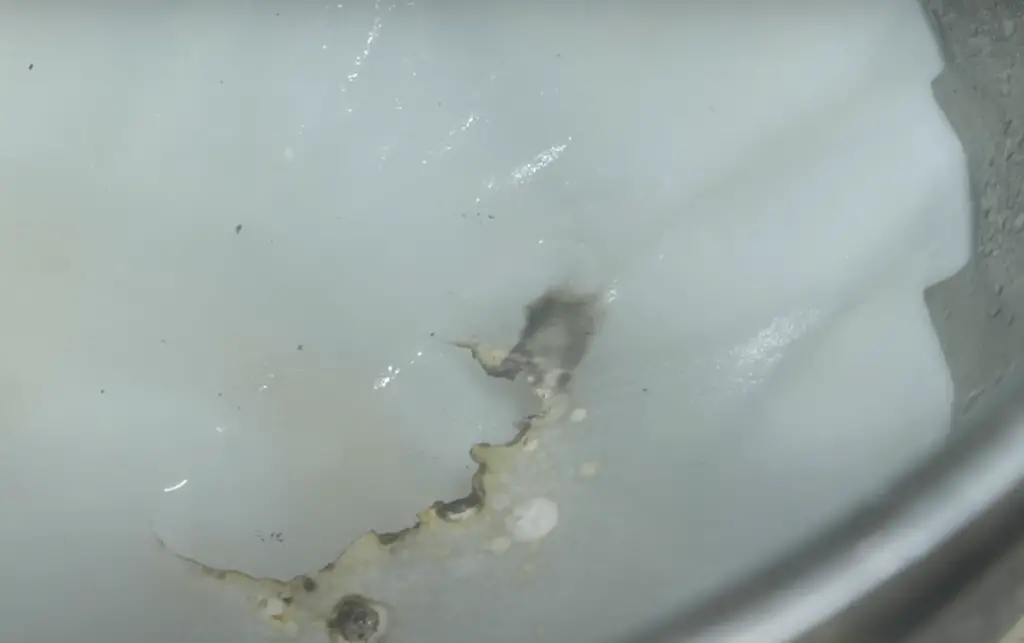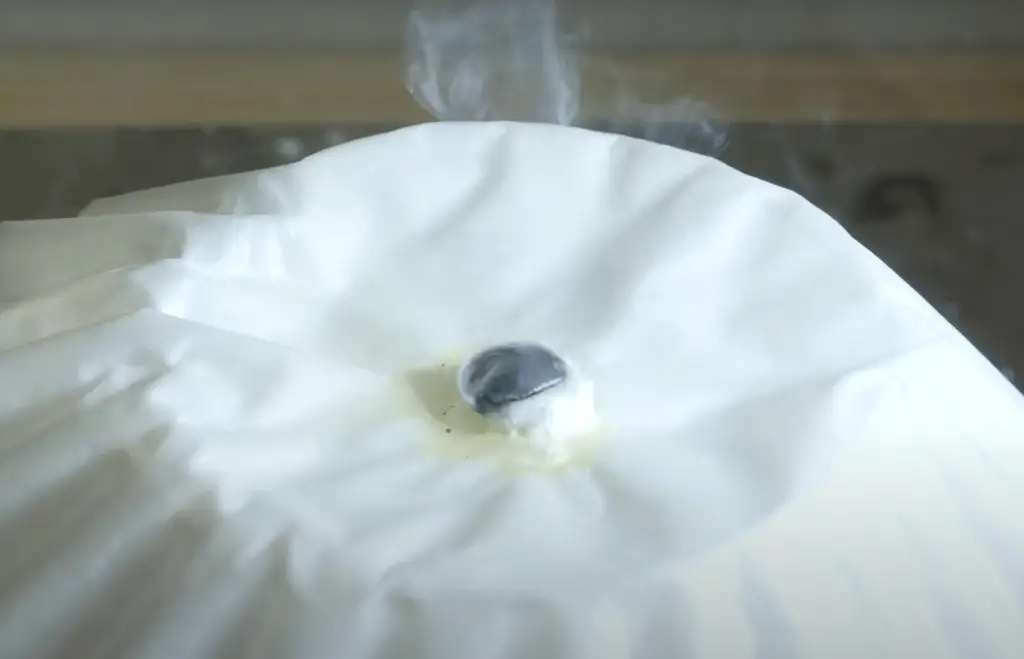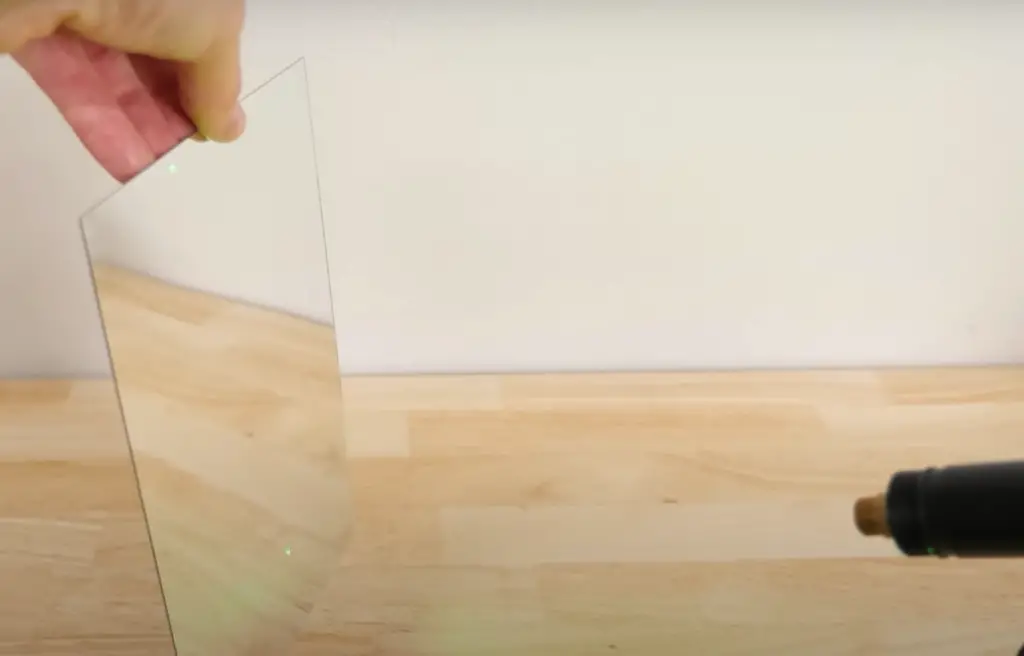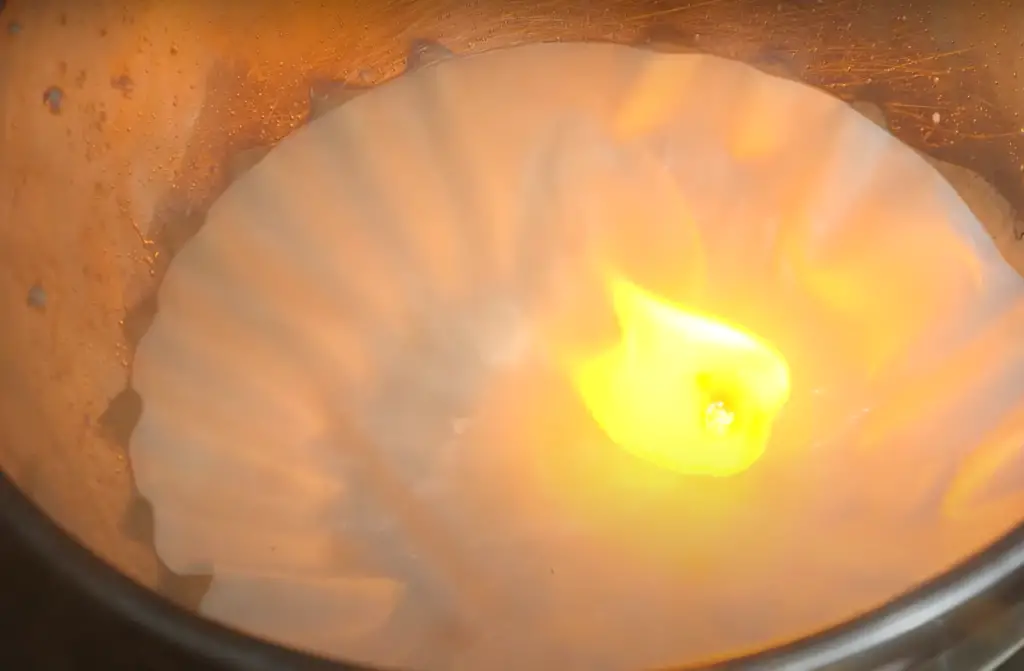X-Ray technology has been utilized for diagnosing life-threatening medical conditions and observing non-visible objects since it was discovered. Many people often ask if X-Rays are able to pass through metals. If so, what materials can they see through and what processes will need to take place in order for an image to be generated? In this blog post, we will unravel the science behind X-Ray imaging by examining how it works and uncovering when a metal item may or may not be seen by an X-Ray machine. We’ll also explore other interesting facts about this groundbreaking staple. So buckle up! Let’s explore in more detail how X-Rays function!
What Is The Meaning Of An X-Ray?
Our eyes cannot detect X-Rays even though they are a form of light. It is just like the light that comes from the sun. X-Ray technology has existed for over a century. In 1895, German physicist Wilhelm Röntgen first discovered strange rays emanating from the cathode ray tube he was experimenting with. [1]
X-Rays have the ability to penetrate through human tissues and bones, which makes them an essential tool for diagnosing medical conditions. X-Rays soon became popular within the medical community, as they allowed doctors to view images of the inside of the body and diagnose diseases without having to make invasive incisions or complex surgeries.

In the years since its discovery, X-Ray technology has advanced significantly and become much more powerful. Present-day X-Rays are capable of penetrating through metallic objects and distinguishing between various material types. This ability is due to the fact that X-Rays have a very short wavelength compared to other types of light or radiation.
The X-Ray can be used to see through things which are otherwise too dense or thick for other forms of imaging technology. [2]
What Does an X-Ray Work Like?
X-Rays belong to the same category as light waves because both are forms of electromagnetic radiation. They have the properties of many materials, including metal, and this is why they are often used medically. As it moves through the body, different tissues absorb varying amounts of its energy. This results in an image that can show us what’s going on inside our bodies – giving medical professionals valuable insight into diagnosing medical conditions. X-Rays lose some of their energy when they pass through metal objects.
However, because of their high energy levels and short wavelengths (less than 1 nanometer), X-Rays still penetrate certain types of metals. For example, aluminum absorbs all X-Ray energy while steel or lead only absorb part of it. It means that it is possible to produce an image of what is located behind a metal object with an appropriate X-Ray machine and settings.
Nevertheless, X-Rays remain a valuable tool for medical imaging and diagnosis, thanks to their ability to penetrate many materials – including metals – without damaging them. With the help of X-Rays, doctors are able to diagnose a wide range of conditions and diseases quickly and accurately – saving countless lives in the process. [3]The X-Rays usage extends beyond medical applications to research fields such as material science, where they are used to analyze the structure of materials. By passing X-Rays through samples of metals, researchers can study how these metals respond to various forms of stress and other physical forces.
The Benefits of Using X-Ray Technologies
X-Ray technologies are used in a much larger service sector than it seems. Even though they are often associated with medical imaging, its applications go far beyond that as these examples have shown us. It’s an important tool for many businesses and industries that rely on inspecting materials and structures swiftly and accurately. The technology has also been crucial in helping reveal information about some of our most fascinating cultural artifacts. As times goes by, new possibilities will come up making this technology even more powerful in helping us understand what lies ahead of us. So let’s keep a more in-depth view:
Medical Sphere
X-Ray scanning is the most used and well-known application of this technology.

It allows doctors to get a better look at bones and internal organs, helping them diagnose and treat illnesses or injuries more accurately. Besides, it is used for examining body parts that need particular attention, such as the teeth, joints, lungs and heart.
Industrial Sphere
Here, it’s applied to inspect industrial products or material composition analysis. It’s a very effective way to detect flaws in material before it’s put into the market, ensuring product quality and safety. X-Rays are also frequently used in security checks at airports and other public places. In this case, they help identify any dangerous objects hidden inside items brought to the area by scanning them without having to open them up. [4]
Aerospace Industry
It has been extremely useful to the aerospace industry over its development years. Its applications include analyzing and inspecting parts of engines, landing gear, wings, and other aircraft components. It helps detect flaws and imperfections with minimal human intervention, reducing costs and improving efficiency.
Archaeology and Artworks Restoration
X-Ray technologies allow archaeologists to view inner structures of pottery pieces, revealing information about ancient civilizations without having to break into the artifact itself. The same applications can be found in artwork restoration where specialized software helps art restorers to analyze the internal structure of a painting or sculpture. This way they can determine the age and origin of a piece accurately without having to damage it.
This diversity lies in a number of key advantages:
- X-Ray is safer than other radiation forms, such as gamma radiation. It emits lower levels of radiation and thus has a much lower risk of causing any harm to people or objects.
- X-Ray allows for accurate imaging of the inside of an object without needing to destroy that object in order to see what’s inside.
- The X-Rays application also makes it possible to detect defects, cracks or flaws in materials that are invisible to the human eye. [5]
Are X-Rays Able To Get Through Metallic Objects?
It is an intriguing question. X-Rays are a type of radiation that can penetrate through various materials, even most metals.
However, some metals are able to absorb and scatter more photons than others. This means that they can reduce or even completely block the radiation that can pass through them.

The amount of metal objects depends on their thickness and type. For example, aluminum is known for its low X-Ray absorption rate, meaning it blocks only a small percentage of incoming radiation. However, lead has a higher absorption rate, meaning it can block more X-Rays.
Thicker objects will also block more radiation, as more layers of metal need to be penetrated before the X-Ray can get through.
There are also other factors that might affect how much radiation gets through an object, such as its distance from the source or any other shielding material that could be present. Ultimately, determining whether a specific object can be penetrated by X-Rays requires a thorough evaluation. [6]
What Kinds Of Materials Do X-Rays Not See Through?
There are some other materials besides metals that X-Rays can’t pass through. These include human tissue and bone, as the density of these substances blocks out most of the radiation. Other materials such as wood, plastic and rubber can also stop photons from passing through them.
It’s important to note that even if a material has the ability to block X-Rays, that doesn’t necessarily mean it will be completely opaque. Some types of plastics or rubbers have a high enough concentration of atoms that they can absorb some radiation, while still allowing other parts to pass through. Finally, certain shielding materials such as lead or steel can be used to further reduce the amount of radiation that gets through an object. This is especially useful in medical imaging, where it’s important to ensure that the patient isn’t exposed to too much radiation.
Plus, X-Ray radiation can be scattered by various substances, such as air or water. Under specific circumstances, some materials that are typically X-Ray resistant can still enable some of the radiation to go through.
X-Rays are unable to penetrate certain materials besides metal, like concrete and brick. These materials are too dense to allow any radiation to pass through them, making them useful for shielding certain objects or areas from X-Ray radiation. Also don’t forget about gamma rays, which are even more powerful than X-Rays and have the ability to penetrate through more materials. [7]
What Is a Way To Block X-Ray From Penetrating Through Metal Objects?
The best way to block X-Ray from penetrating through metal objects is to use lead sheets. Due to its high atomic number, lead is a better absorber of X-Rays than other materials. This makes lead the ideal material for shielding against radiation. Lead sheets can be used in several ways.
The first is to place the sheet between the X-Ray source and the metal object. This can create a barrier that will block out most of the X-Rays attempting to pass through. The second option is to cover the object with lead sheets, which will provide full coverage and protection. Lead also works well with gamma rays and some types of heat radiation, making it a versatile shielding material for many applications. [8]
In addition to lead sheets, there are other methods. Thick aluminum plates make excellent shields because they reflect X-Ray radiation and prevent it from passing through. Copper, bismuth, and other metals can also be used to form effective shielding layers against X-Rays. In some cases, the use of multiple layers of different types of metal may provide even greater levels of protection from X-Ray penetration.
Ultimately, the type and thickness of metal used will depend on the application and desired level of radiation protection. Regardless of the choice, customers should ensure that their chosen method meets all necessary safety requirements. Additionally, any time a shield is in contact with an X-Ray source, personnel must take appropriate safety precautions as exposure may still occur.
How to Avoid X-Ray Radiation?
X-Ray radiation has a wide range of uses in medical and industrial contexts, but overexposure to it can be dangerous. To reduce the risk, there are some practical steps that can be taken.

Firstly, it is important to limit the time spent near a machine or source. It is best practice to plan ahead for any activities that require the use of radiation and keep them as short as possible. If possible, utilize remote controls or automated systems when dealing with machines so that you don’t have to stay in close proximity while they are running.
Secondly, personnel should wear protective clothing when handling X-Rays. Lead aprons, thyroid collars, and other protective garments can help to reduce the amount of radiation exposure.
Thirdly, it is important to make sure that the X-Ray room is properly ventilated and has appropriate shielding.
Finally, if possible, use an alternative imaging technology such as MRI or ultrasound which does not expose personnel to radiation. Following these tips will help ensure that you remain safe when dealing with X-Ray sources. [9]
FAQs
What metals can X-Rays not penetrate?
It cannot penetrate metals such as lead, uranium, and titanium. In addition, X-Rays will not penetrate certain alloys and reflective materials that contain high concentrations of these metals. For example, tungsten steel is a type of alloy which is highly resistant to penetration due to its high concentration of tungsten atoms.
What happens if metal goes under an X-Ray?
Depending on the type of metal, X-Rays may pass through it either partially or completely.
For this reason, it is important to consider the type of material when planning X-Ray imaging. Even if metal is not fully opaque to X-Rays, it can still cause areas in the image to appear darker than normal due to scattered radiation. This scattering can make details difficult to distinguish and reduce overall image contrast. Therefore, it is best practice to avoid placing metal objects between the source of an X-Ray beam and the detector whenever possible. Specialized techniques such as computed tomography (CT) can sometimes even be used to detect and image metal objects in certain situations.Can X-Rays penetrate all matter?
No. It can penetrate metal, but not all metals have the same ability to block radiation. Metals that are more dense, such as lead and uranium, are very effective at blocking X-Ray penetration.

The penetration ability through such softer metals as aluminum and copper relies on their thickness. X-Rays are used to detect features within metal that would otherwise remain unseen by other imaging techniques. For example, they can detect corrosion or cracks in metal parts without having to dismantle them from each other or go through destructive testing processes. This makes it a valuable tool for industry when trying to diagnose the integrity of a system without interfering with it directly.
Why can’t X-Rays pass through metal?
X-Rays are composed of high energy photons that interact with matter in different ways. Metal is made up of densely packed electrons that absorb these energetic particles, making them unable to pass through. This absorption is what makes metal opaque to X-Rays, which prevents us from seeing objects behind it. To get images of metal objects using X-Ray radiation, the metal needs to be very thin or the X-Ray beam must be focused and collimated so that only a small portion passes through while other parts are diverted away from it. This can be achieved by using special equipment, such as filters or collimators, to modify the beam before it reaches its target. The result is an image of the object behind the metal barrier without having to remove it from its position.
Useful Video: See-through Metals Actually Exist!
Bottom Line
Let’s make a little conclusion. X-Ray radiation and its applications are an important aspect of many industries. The ability of an X-Ray to penetrate a metal depends on the atom composition, structure, and thickness of the material. X-Rays have incredibly high frequency waves that are usually able to penetrate through softer objects like skin and bone. But when it comes to harder materials like metal, it’s not so simple. Generally speaking, certain metals are more transparent to X-Rays than other types of metals. For example, light metals such as aluminum and magnesium allow X-Rays to easily pass through them because they contain relatively few atoms in their structure.
References:
- https://www.aps.org/publications/apsnews/200111/history.cfm
- https://bottlefirst.com/can-x-ray-see-through-metal-water-bottle/
- https://www.britannica.com/science/X-ray
- https://www.epa.gov/radtown/radiation-and-airport-security-scanning
- https://www.cancer.org/cancer/risk-prevention/radiation-exposure/x-rays-gamma-rays/what-are-xrays-and-gamma-rays.html
- https://www.studysmarter.co.uk/explanations/physics/waves-physics/x-rays/
- https://futurumcareers.com/the-power-of-x-rays-in-materials-science
- https://www.canadametal.com/lead-good-for-radiation-shielding
- https://www.hhs.gov/answers/public-health-and-safety/how-can-i-reduce-radiation-exposure-from-x-rays/index.html






